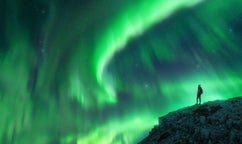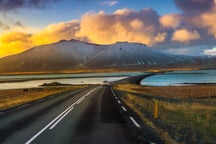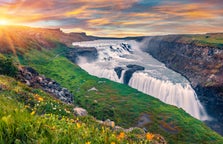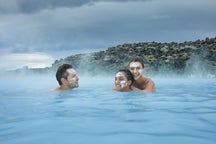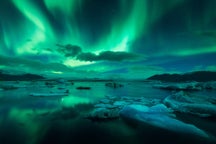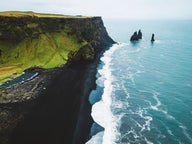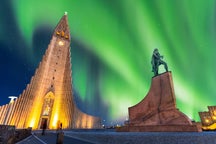
Iceland is known for its many natural wonders which include geothermal attractions such as hot springs, geysers, and landscapes formed by volcanic activity. Geothermal power, derived from the Earth's internal heat, accounts for the majority of Iceland's electricity and heating needs. But why does Iceland have so much of it?
While Iceland may have a reputation as being a chilly place, the entire island and its inhabitants' livelihood has been shaped by the warmth hiding just below the surface. Whether you're washing your hands at your accommodation in Iceland or are taking a self-drive tour to visit the country's best hot springs, geothermal power will play a large role in your visit!
Why You Can Trust Our Content
Guide to Iceland is the most trusted travel platform in Iceland, helping millions of visitors each year. All our content is written and reviewed by local experts who are deeply familiar with Iceland. You can count on us for accurate, up-to-date, and trustworthy travel advice.
In this article, we'll delve into the science behind geothermal power, the innovative ways Iceland utilizes this resource, and the environmental and economic benefits that have propelled this Nordic country to the forefront of green energy technology.
Why Is Iceland So Geothermally Active?
 Iceland is the only country in the world to sit atop the Mid-Atlantic Ridge, the rift where the North American and Eurasian tectonic plates meet. This geological feature creates abundant geothermal activity and is the reason behind Iceland's many volcanoes, geysers, and hot springs. It also makes Iceland a prime location for geothermal power generation.
Iceland is the only country in the world to sit atop the Mid-Atlantic Ridge, the rift where the North American and Eurasian tectonic plates meet. This geological feature creates abundant geothermal activity and is the reason behind Iceland's many volcanoes, geysers, and hot springs. It also makes Iceland a prime location for geothermal power generation.
The country's geothermal energy is harnessed by tapping into naturally occurring hot water and steam reservoirs beneath the earth's surface. These reservoirs are formed by the heat generated from the Earth's mantle and the geothermal gradient.
Given its plentiful geothermal resources, Iceland has invested heavily in geothermal power generation, making it one of the world leaders in this renewable energy source. Over 90 percent of Iceland's power is geothermal!
- Learn more about Tectonic Plates in Iceland
History of Geothermal Power Usage in Iceland
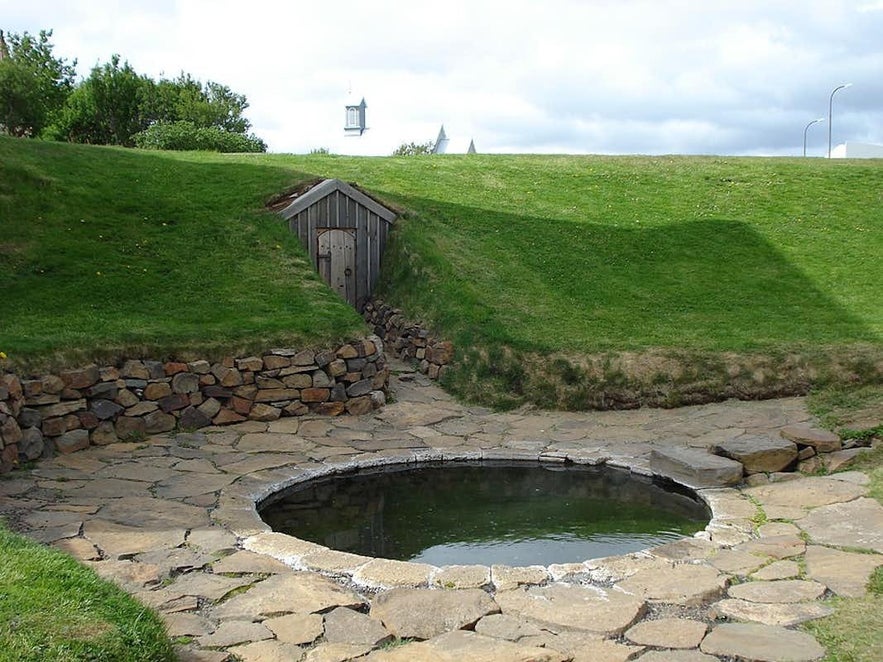
Photo from Wikimedia, Creative Commons, by TommyBee. No edits made.
The geothermal power of Iceland has been known by its inhabitants ever since settlement. Ingólfur Arnarson, Iceland's first settler, is credited as having given the country's capital of Reykjavik its name, which translates to "Smokey Bay." This is because he saw steam rising from hot springs, which he confused for smoke.
Icelandic sagas tell of people visiting hot springs to bathe all around the country. The original Snorralaug pool in Reykholt, owned by legendary Icelandic writer Snorri Sturluson, is believed to have been large enough to fit up to 50 people at once. That must have been quite a happening place during social gatherings!
Throughout the centuries, Icelandic people used the hot water readily available within the land to bathe and wash their clothing, but it wasn't until quite recently that they truly began to harness the geothermal power available to them.
- See also: A Complete History of Iceland
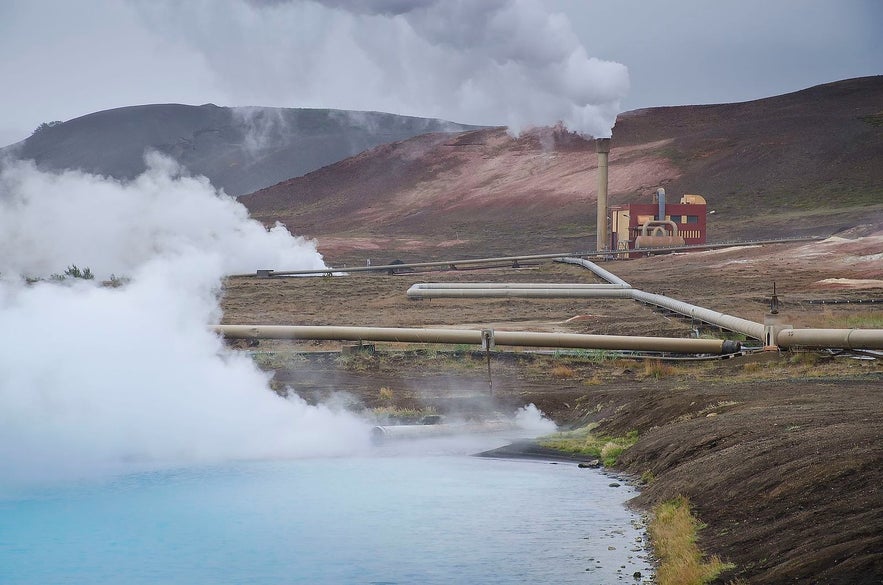
Photo from Wikimedia, Creative Commons, by Pjt56. No edits made.
Early on in the 20th century, Icelandic people first began rerouting hot spring water to heat their buildings. Following a power shortage in Reykjavik in 1920, people began looking at how to harness the power residing in the earth around the city. Early attempts were unsuccessful, but in 1967, the first geothermal power station, Bjarnarflag, was opened near Lake Myvatn.
Today there are several geothermal power stations in Iceland that supply the Icelandic nation with about 65 percent of the country's energy, with hydropower contributing roughly 20 percent. This means that 85 percent of Iceland's primary energy supply is derived from renewable energy sources!
Benefits of Geothermal Power
 Geothermal energy is derived from the Earth's heat, which is continuously replenished by natural processes. Unlike fossil fuels, which are finite and contribute to environmental degradation, geothermal energy is a sustainable resource that can be utilized for thousands of years without depletion.
Geothermal energy is derived from the Earth's heat, which is continuously replenished by natural processes. Unlike fossil fuels, which are finite and contribute to environmental degradation, geothermal energy is a sustainable resource that can be utilized for thousands of years without depletion.
Geothermal power generation produces minimal greenhouse gas emissions compared to fossil fuels. Despite Iceland spending more energy per capita than most other countries, it's important to note that Iceland's energy comes from sustainable and renewable sources, which means the environmental impact is much lower compared to countries that rely heavily on fossil fuels.
With all this geothermal power at their disposal, the Icelandic people have integrated geothermal power into various aspects of their daily lives. Here are a few examples:
-
Electricity Generation: As previously mentioned, Iceland's geothermal power stations generate most of the country's electricity.
-
Heating: Geothermal energy is essential for residential heating in Iceland and is the largest part of energy consumption for the average household. Over 90% of Icelandic homes are heated with geothermal energy, making heating costs in Iceland among the lowest in the world. Some streets in Iceland are even heated to prevent frosting on the roads!
-
Swimming Pools: Swimming pools are an essential part of Icelandic culture, made possible due to the hot water used to warm outdoor and indoor pools all across the island. Icelandic public pools are by many considered to be the best in the world, and Icelandic swimming pool culture has even been nominated to be added to UNESCO's list of intangible cultural heritage!
-
Greenhouses: You might not think that Iceland's cool climate would lend itself to cultivating fruits, vegetables, and flowers, but geothermal resources enable year-round cultivation in greenhouses.
-
Tourism: Iceland's geothermal features, such as hot springs, geysers, and volcanic landscapes, are major attractions for tourists. Many visitors come to experience natural hot springs, explore geothermal areas, and learn about Iceland's unique geology and renewable energy practices.
Visiting a Geothermal Power Plant in Iceland
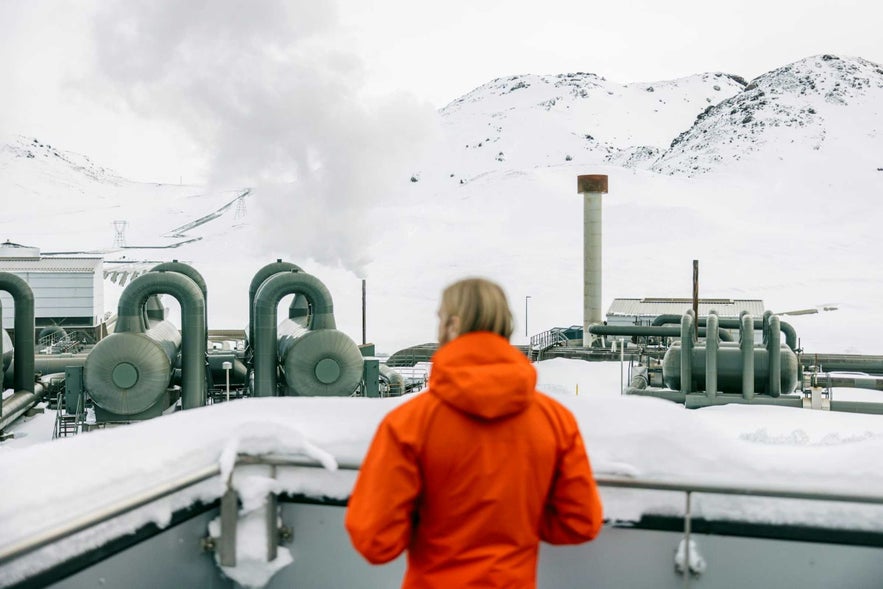 The geothermal power plant in Hellisheidi, located near Reykjavik, Iceland, is one of the largest geothermal power plants in the world. The plant utilizes the geothermal resources of the nearby Hengill volcanic area, producing both electricity and hot water.
The geothermal power plant in Hellisheidi, located near Reykjavik, Iceland, is one of the largest geothermal power plants in the world. The plant utilizes the geothermal resources of the nearby Hengill volcanic area, producing both electricity and hot water.
The plant is home to the Geothermal Exhibition, an interactive visitor center where guests can learn about geothermal energy, Iceland's geology, and the plant's operations through guided tours, displays, and videos.
By taking a 30-minute self-guided audio tour of the Geothermal Exhibition, you will learn about Iceland's geology, the history of geothermal energy in Iceland, and how hot water and electricity are produced and supplied. You can also learn about the innovative practices of Carbfix, an innovative Icelandic project that captures and stores CO2 by turning it into stone through mineral carbonation.
Best Geothermal Areas in Iceland
Here are some of the best places in Iceland to witness the effects of the country's geothermal power.
The Blue Lagoon
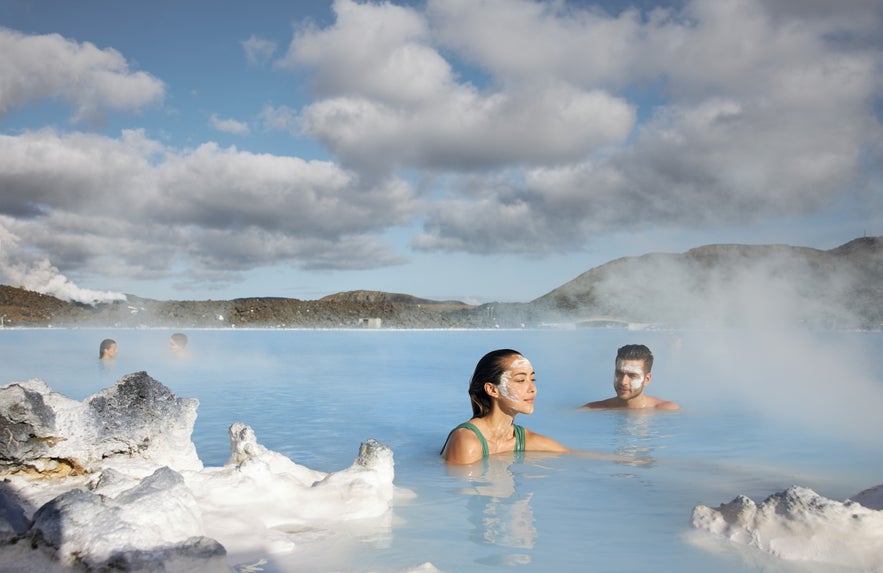 The Blue Lagoon is Iceland's most iconic and popular attraction. Located a short distance from Reykjavik, it is renowned for its milky-blue, mineral-rich waters that contrast with the backdrop of a harsh volcanic lava field surrounding it.
The Blue Lagoon is Iceland's most iconic and popular attraction. Located a short distance from Reykjavik, it is renowned for its milky-blue, mineral-rich waters that contrast with the backdrop of a harsh volcanic lava field surrounding it.
The history behind the Blue Lagoon is quite interesting, as the hot spring and spa are the result of the runoff water from the nearby Svartsengi Power Station, which began collecting in 1976. Surprisingly, the waters proved amazing to bathe in, and the Blue Lagoon grew into the incredible attraction it is today.
Today, the Blue Lagoon is found on most travel itineraries of people visiting Iceland. Be sure to book your ticket to the Blue Lagoon well in advance, as space is limited and demand is high!
Reykjanes Peninsula
 The Blue Lagoon is far from being the only geothermal site of interest on the Reykjanes Peninsula, a region known for its dramatic landscapes and geothermal wonders. In recent years, there have been seven volcanic eruptions in Reykjanes - a number that might rise even higher.
The Blue Lagoon is far from being the only geothermal site of interest on the Reykjanes Peninsula, a region known for its dramatic landscapes and geothermal wonders. In recent years, there have been seven volcanic eruptions in Reykjanes - a number that might rise even higher.
The geothermal areas of Krysuvik and Seltun have walkways and viewing platforms that guide visitors past numerous mud pots, hot springs, and steaming vents. The effects of these geothermal powers can be seen in vivid color patterns in the surrounding landscape. Explore these otherwordly spots on a 6-hour small group tour of Reykjanes.
The Golden Circle
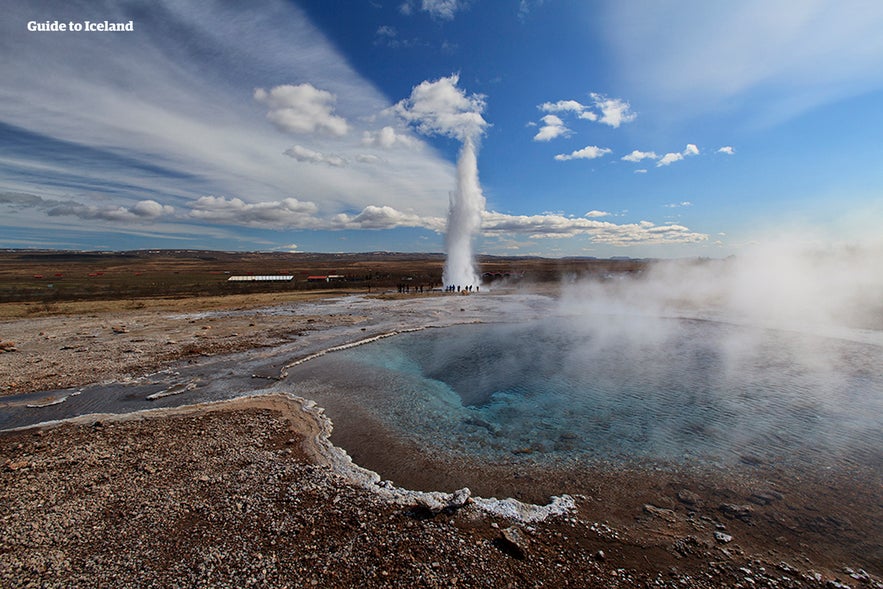 The Golden Circle is Iceland's most popular sightseeing route, offering several gorgeous attractions within a reasonable driving distance from the capital. There are three stops on the traditional Golden Circle: the waterfall of Gullfoss, Thingvellir National Park, and the Geysir geothermal area.
The Golden Circle is Iceland's most popular sightseeing route, offering several gorgeous attractions within a reasonable driving distance from the capital. There are three stops on the traditional Golden Circle: the waterfall of Gullfoss, Thingvellir National Park, and the Geysir geothermal area.
The Geysir Geothermal Area is home to the Great Geysir, which lent its name to all other geysers worldwide. Although the Great Geysir is inactive today, the nearby geyser of Strokkur erupts every few minutes, shooting boiling water up to 30 meters into the air. The area features numerous hot springs, fumaroles, and colorful geothermal pools, creating a landscape of otherworldly beauty.
You can see Geysir by taking one of the many Golden Circle tours available. There are also lots of great
Lake Myvatn
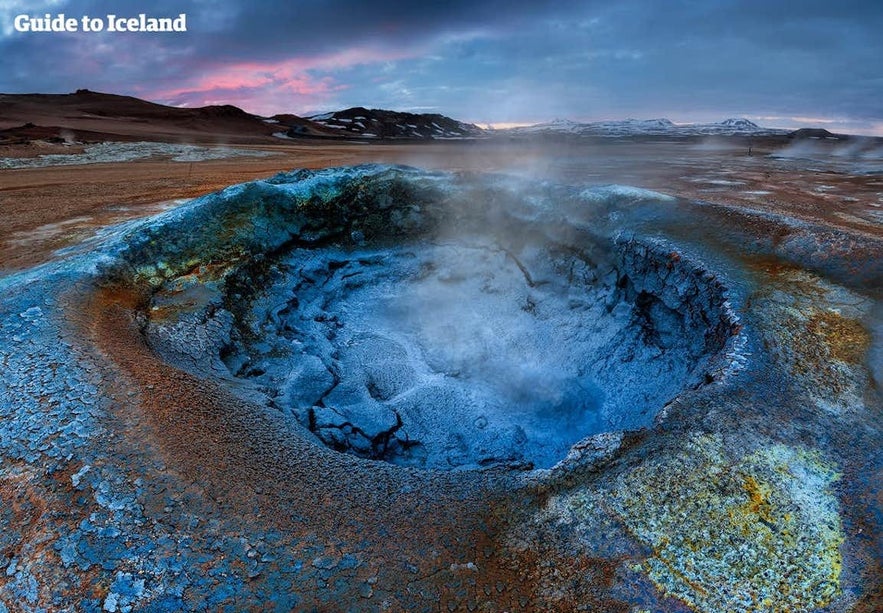 Lake Myvatn in North Iceland is a captivating natural wonder renowned for its breathtaking beauty and diverse ecosystems. Created by a volcanic eruption over 2,000 years ago, the area is full of stunning landscapes of lava fields, geothermal areas, and volcanic craters.
Lake Myvatn in North Iceland is a captivating natural wonder renowned for its breathtaking beauty and diverse ecosystems. Created by a volcanic eruption over 2,000 years ago, the area is full of stunning landscapes of lava fields, geothermal areas, and volcanic craters.
One of the geothermal areas in the vicinity of Lake Myvatn is Namaskard, which is known for its stunning and alien-like landscape, where you can see amazing formations created by the heat from the earth. Vividly colored mineral deposits add to the surreal landscape, ranging from fiery oranges and yellows to deep reds and greens.
After exploring the area, we recommend grabbing a ticket at the Earth Lagoon and unwinding in the geothermal waters while admiring the stunning nature that surrounds them. There are also many fantastic hotels available at Myvatn that are perfect for those who wish to explore the rural beauty of northern Iceland.
Landmannalaugar
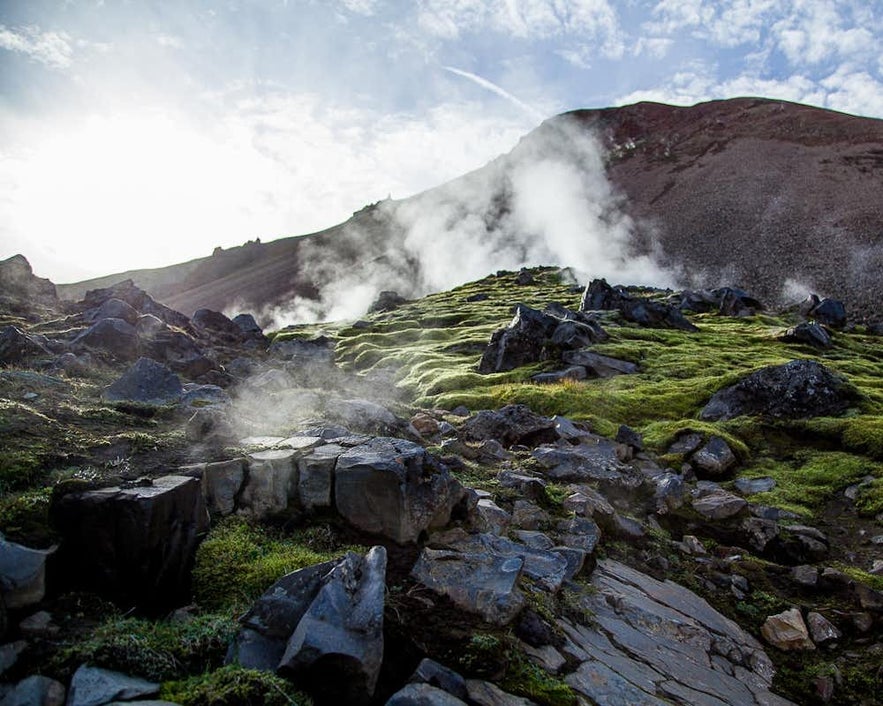 Landmannalaugar is an area located in the Highlands, renowned for its stunning rhyolite mountains, geothermal hot springs, and vibrant hiking trails. The area's colorful landscapes, ranging from red and orange to green and blue, create a breathtaking backdrop for outdoor adventures.
Landmannalaugar is an area located in the Highlands, renowned for its stunning rhyolite mountains, geothermal hot springs, and vibrant hiking trails. The area's colorful landscapes, ranging from red and orange to green and blue, create a breathtaking backdrop for outdoor adventures.
Visitors can hike through lava fields, soak in natural hot springs, and explore the otherworldly terrain shaped by volcanic activity. Landmannalaugar is a popular starting point for multi-day treks, including the Laugavegur and Fimmvorduhals trails, offering unparalleled opportunities to experience Iceland's untamed wilderness.
Landmannalaugar can only be visited during summer time as the roads to the Highlands are closed during winter months. You will also need to rent a 4x4 vehicle to get there, as the road is rugged and has a river crossing. To save yourself the hassle, you might want to consider taking a Landmannalaugar super jeep tour with a pickup from Reykjavik.
Reykjadalur and Hveragerdi
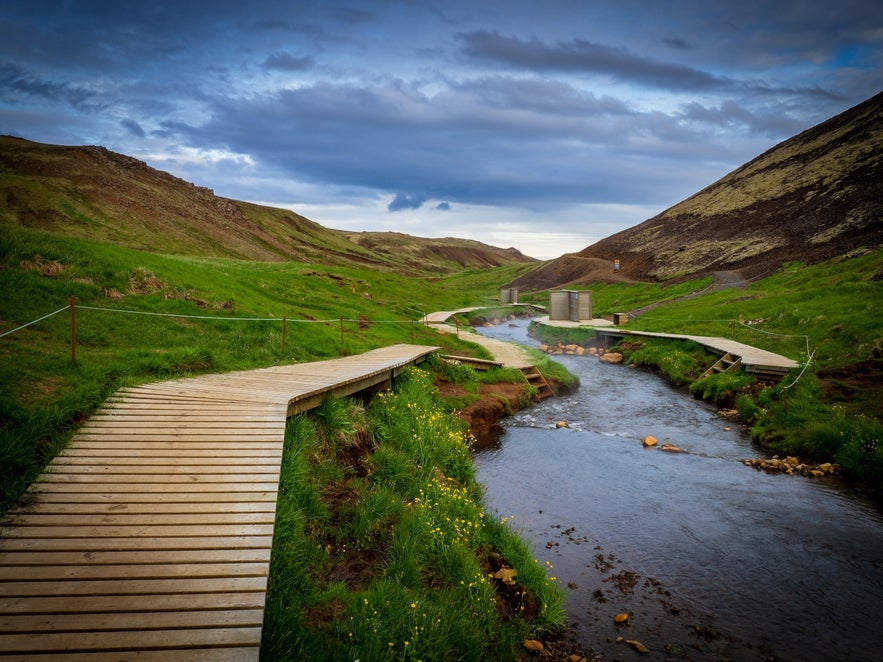 Hveragerdi is a town located in southwestern Iceland known for its geothermal activity and hot springs and is sometimes dubbed the "hot spring capital of Iceland." Arriving at Hveragerdi, you'll often see strokes of steam rising from the area, which is full of hiking trails that will lead visitors through the geothermal terrain.
Hveragerdi is a town located in southwestern Iceland known for its geothermal activity and hot springs and is sometimes dubbed the "hot spring capital of Iceland." Arriving at Hveragerdi, you'll often see strokes of steam rising from the area, which is full of hiking trails that will lead visitors through the geothermal terrain.
A short hike from Hveragerdi, you will find Reykjadalur, the Valley of Steam. It is best known for a hot river that runs through it that visitors can even bathe in, as well as multiple hot springs in the surrounding hills.
After visiting Reykjadalur, we recommend visiting The Greenhouse on your return to Hveragerdi. This exciting locale is the perfect place to grab a bite or buy some locally sourced products. You can even book a room at the Greenhouse Hotel which makes for a great basecamp if you wish to explore Iceland's South Coast.
We hope you learned something about geothermal power in Iceland. Have you visited any geothermal sites in Iceland? What was your experience? Let us know in the comments!







